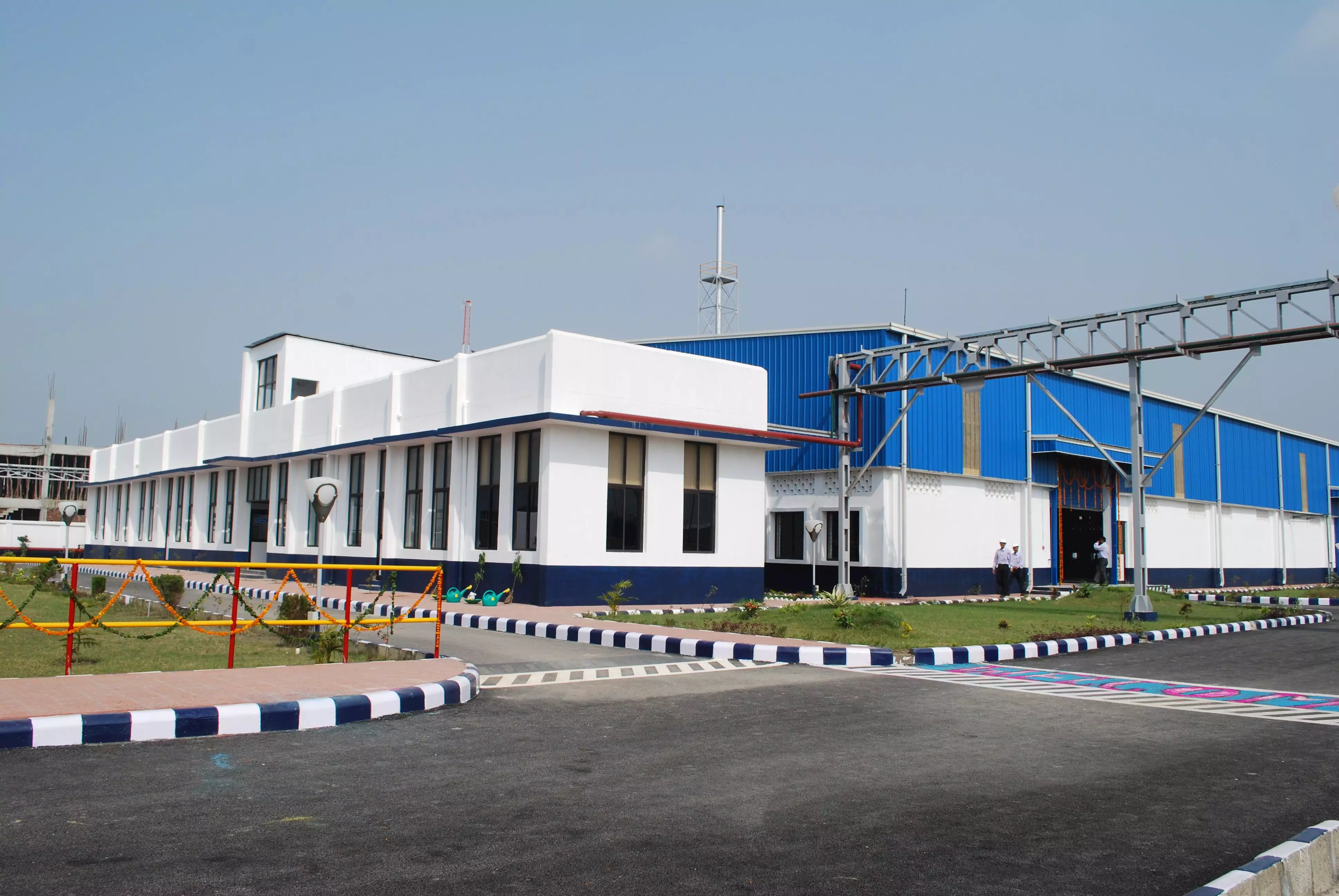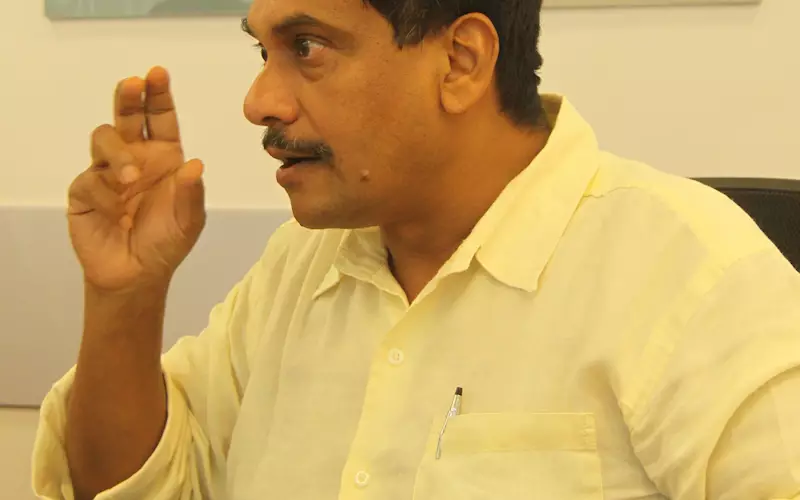Anil Krishna, chief executive and general manager at Henkel Adhesives Technologies, shares the company’s passion for excellence and global leadership with Ramu Ramanathan
Ramu Ramanathan (RR): The modular Koparkhaine factory occupies 7,000 sq/metres. I’m told it was created with a low fund base. Is it true?
Anil Krishna (AK): Yes, we put up the hotmelt plant at the outset. Then when we grew and had funds, we put the polymerisation plant. I think we are one of the most cost-efficient polymerisation units in the Henkel world. We invested $8,00,000 for the plant. When we set up this factory there were no walls. We installed the reactor and ran it. The thing is, adhesive factories are not as expensive a proposition as some of the other manufacturing units.
RR: Then …
AK: It is knowledge intensive and customer-service intensive. Manufacturing is the least of our concerns. As the market grows and when there’s a need we can de-bottleneck the plant, as per our plans.
RR: The Rudrapur plant was commissioned in 2008 ...
AK: Most of our customers wanted business continuity or a distance contingency plan from our side. At that time, we had factories in SEA and China and we could support print firms from there. But it meant a long lead time. Customers had a concern that if they were 100% dependent on us, what if there was a calamity? How would we support them?
RR: What does the Rudrapur plant produce?
AK: Rudrapur offers three technologies — conventional hotmelt, PSHMA and water-based adhesives — catering to customers in the North and East of India.

Rudrapur plant: offers conventional hotmelt, PSHMA and water-based adhesives
RR: Just to rewind a bit. What happened with Henkel and National Starch in 2008
AK: To put it in perspective, Henkel was always a global leader in adhesives. National Starch was number two or number three. With this integration in India, we had access to technology. Henkel is a very technologically-driven company. They invest close to 3% of their turnover in R&D and we benefitted from that. During my National Starch days I used to think, if we had these Henkel products, we could do a better job. Today that’s a reality.
RR: What did you learn from Henkel?
AK: The thing is, like most German companies, Henkel is a system-driven company and we learnt a lot from them. We got organised. It made us focus internally. And externally it made us approach the customer in a structured manner. Having said this, we were solid in the technical support area, but with this integration we became better.
RR: In what way?
AK: Simple example is Procontrol, a Henkel patented tool, which we can use online at a customer’s end. It can measure the quantity of adhesive dispensed, per carton. The same can be used for online measurement of the quantity of adhesives dispensed like PSHMA for sanitary napkins or diapers. Procontrol helps the customers calibrate and control one of the variables in the manufacturing process; thereby optimising it. We used this tool to add value to our customers. We have three Procontrols stationed across India. Each of them costs Rs 25 lakh.
RR: Did you enhance your product portfolio?
AK: We consolidated and expanded. We also trimmed areas such as the lower-end of book binding. In packaging, we have started an operation to move away from EVA based hotmelt towards metallocene hotmelt. It is a superior technology, which is gaining traction in the market.
RR: You mentioned EVA hotmelt where Henkel has a market share in the perfect-bound books. In this context, where do you see PUR being positioned in India?
AK: It is a learning curve for the Indian book industry. The first hurdle is when you think of PUR on a per kilo cost basis. The second hurdle is the capital investment. These are the two hurdles. When these two are overcome you have to convince the publisher that this is not a cost item, but a value item.
RR: Is there a possibility of Henkel offering an intermediary product between EVA and PUR, for the Indian market?
AK: There could have been an intermediary. Metallocene could be an intermediary. Would it have delivered value to book binding? The verdict is not out. We considered PUR since research indicated it would deliver value.
RR: How will this affect India?
AK: Metallocene in packaging, ensured that the consumption was reduced by 25-35% against conventional products. In book-binding we haven’t established it as yet. We went one step ahead with PUR. Today, PUR is what we are committed to. We have moved from the 0.8mm standard to 0.3 mm average glue thickness. The cost in use is lower.
RR: What are the numbers for India? 1.3 billion perfect-bound books?
AK: Yes, we have the same numbers. If you look at Henkel’s adhesive sale, we sell about 100–150 kgs (on an average) to a print unit per month. The book binding hotmelt volumes should be in the range of 4,500 to 5000 metric tonnes.
RR: And are you consciously making a decision to say no to certain kind of clients at the bottom of the pyramid?
AK: We say no, when we are not sure about collections. But we extend technical services either through our direct support or through indirect tie-ups to customers who purchase as low as 25kgs from us. For us, the no-nos are when we see a deal-breaker or our payments are not secured or somebody defaults on a regular basis.
RR: What is happening with packaging related adhesives? Is it a segment where Henkel is lagging?
AK: Quite true. We have not reached the full potential. The opportunities are huge. We are focusing on this area.
RR: So all the growth that you see, both in value and volume terms, is coming from this area?
AK: Our focus is on the premium and middle segments customers with automated lines. Manual operations are not our focus. This is a segment we believe value propositions are difficult to demonstrate. Also, we are seeing growth from segments like automated wood conversion, tapes and labels, plus hygiene products.
RR: You have seen a change in the Indian mindset, especially in the paper and paper board packaging. How do you view the recent strides in this segment?
AK: The E-flute application is believed to be a low cost application. An adhesive sells for Rs 35 to Rs 45. We can get a system which will foam the adhesive and apply it. It will bring value to the customer in productivity and reduced rejections. What happens is, in E-fluting, a low cost adhesive is used. Therefore, the boards warp and you are not able to die-cut. And so, you keep it for stacking to eliminate the warp. With this equipment, the boards will not warp and directly go for die-cutting. Later, it can go to the folder-gluer to make the boxes. The people who have installed this system find it a value-add along with a reduction in their cost per unit. This is a technology called Aerobond. It’s available in India. We need to garner a minimum volume from a customer to put this system into place, since the capital cost is on our account
RR: We saw the inspection systems at Drupa. Are we going to see SmartControl coming to India?
AK: I think so. The Procontrol unit is like a SmartControl unit. We got our first Procontrol unit three years ago. SmartControl will make its way to India, sooner or later. This technology will help the book binding industry to optimise costs and reduce rejections.
RR: I was impressed with your thrust on R&D? Can you share a couple of customer case-studies…
AK: One of the key things to have happened in the last couple of years is the high performance adhesive for tobacco industry. If you looked at packs that were previously produced, they had square edges. The lines were run at anything above 500 packs per minute. But, when you do a bevel-edged pack they are difficult to bond because of the types of forces that act on the bonding area. Initially when we started out with conventional adhesives, we were able to run at 300 packs per minute. The OEM wanted to modify the machine. We re-formulated the adhesive which gave the cigarette major a speed of 550 to 600 packs per minute. That couldn’t have happened unless and until we had a strong and capable R&D local team.
RR: What do you see as the future of Indian print?
AK: I see three things transpiring: One is industry consolidation as we have a lot of small operators. Two, people in India will continue to read newspapers and books in the conventional format. Finally, we expect an increased focus in quality of packaging products.
RR: And one concern area?
AK: My big concern is that more than 70% of our raw materials are imported. Here, the rupee volatility is a worry.
RR: What about Henkel’s PUR revolution?
AK: For the next six months, our biggest challenge is laying the foundation for future growth of PUR in the binding area. Not just selling the adhesive but creating awareness. We are formulating audits to help the customers. This is something we picked up from our tobacco SBU where we do a lot of VRP (Value Received Programme). We audit the customer’s adhesive operation window. In the book-binding area, it will help customers to become more efficient in their operations from an adhesives perspective. Also, from a PUR viewpoint we are not merely trying to sell it. We have compiled the dos and don’t’s of PUR – based on our experience in India. It’s not a big handbook but a consolidated manual of how to handle PUR from an Indian perspective. The idea is to make PUR idiot-proof.
RR: So that the operator does not damage expensive equipment because of poor handling of the adhesive?
AK: Yes, that is one of the serious concerns. The thing is, it is a cross-linking adhesive and once it cures we cannot de-crosslink it. So how do I impart learning. This is being addressed by putting all our experience into one handbook and ensuring it is available in local languages.
RR: Any announcements for the Indian market?
AK: We are looking at micro-emission Cool PUR. Henkel has developed the product. We have initiated cost-reduction programs for our customers, to counter their spiralling costs. We launched a new hotmelt technology for edge banding in the wood working segment. During August 2012, we will host a PUR technology seminar, conducted by a global expert on PUR from Henkel, Germany.
(Noel D’cunha and Rushikesh Aravkar accompanied Ramu Ramanathan for the plant visit and interview)












 See All
See All